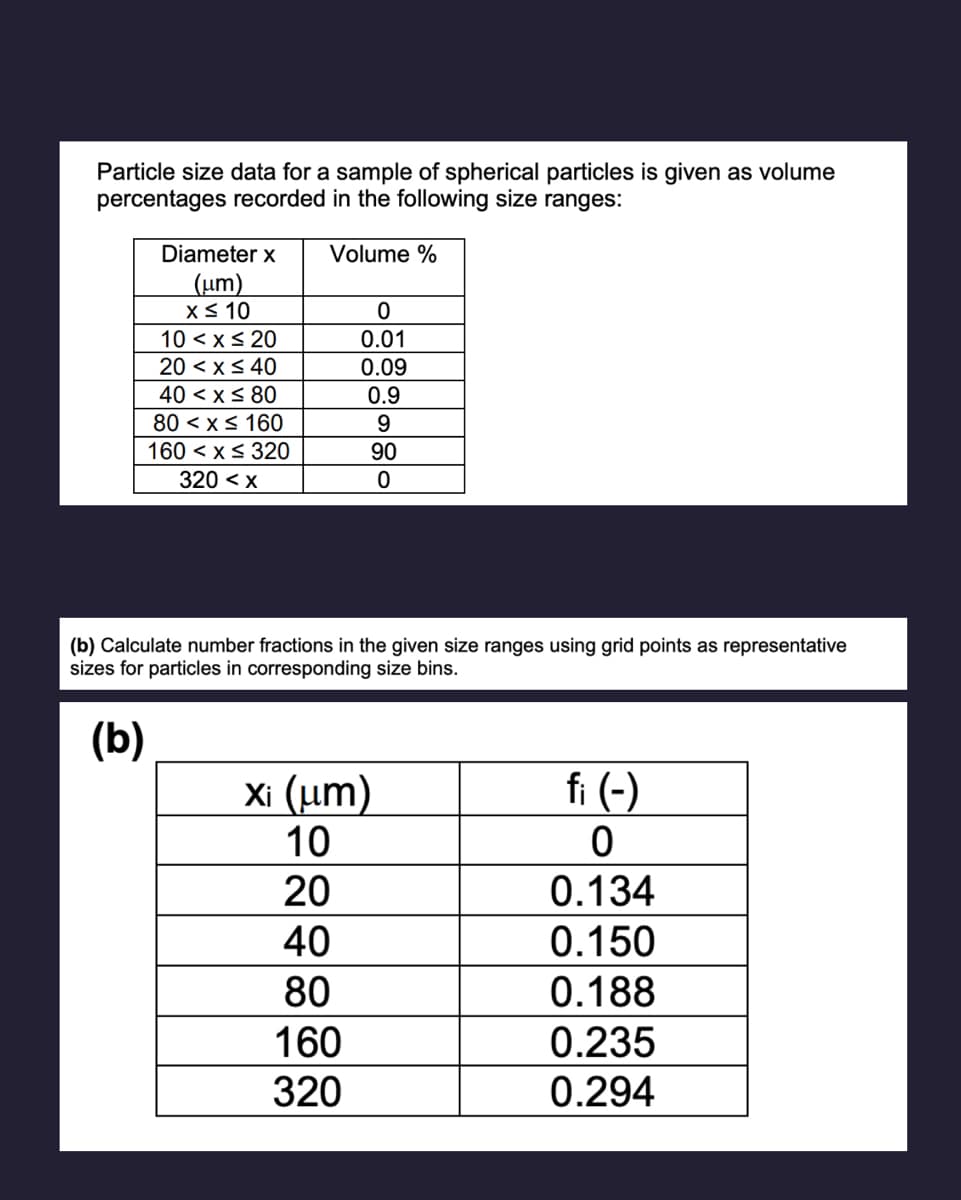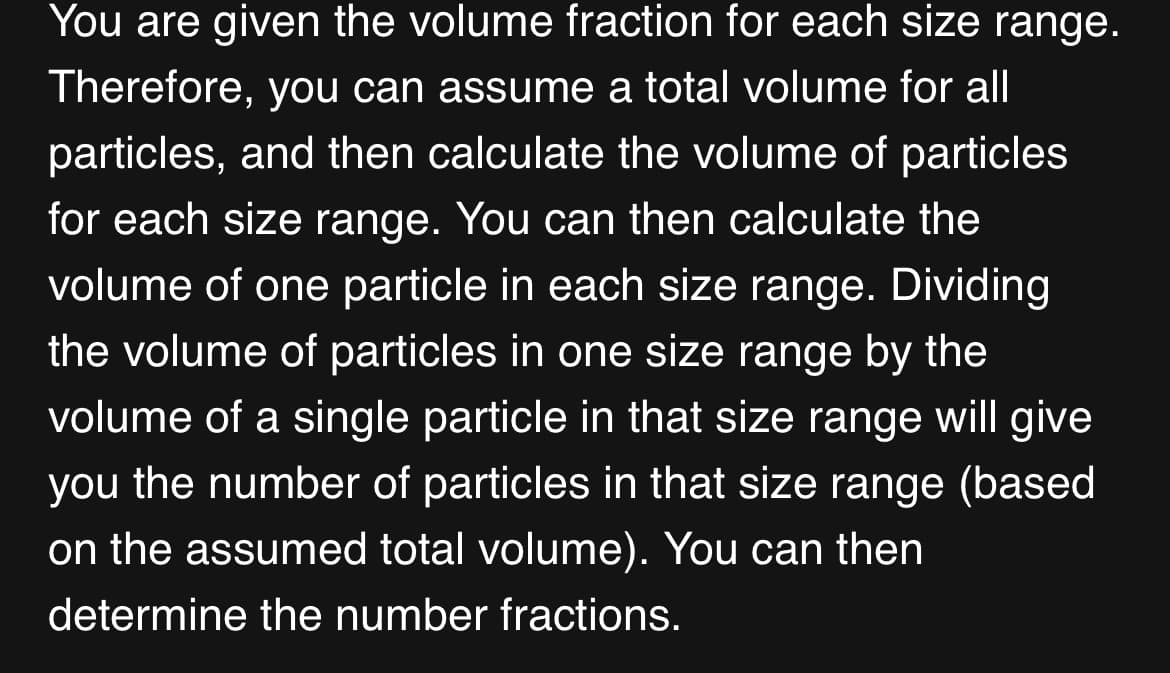Particle size data for a sample of spherical particles is given as volume percentages recorded in the following size ranges: Volume % Diameter x (um) x ≤ 10 10 < x≤ 20 20 < x≤ 40 40 < x≤ 80 80 < x≤ 160 160 < x≤ 320 320 < x 0 0.01 0.09 0.9 9 90 0 (b) Calculate number fractions in the given size ranges using grid points as representative sizes for particles in corresponding size bins. (b) Xi (um) 10 20 40 80 160 320 fi (-) 0 0.134 0.150 0.188 0.235 0.294
Particle size data for a sample of spherical particles is given as volume percentages recorded in the following size ranges: Volume % Diameter x (um) x ≤ 10 10 < x≤ 20 20 < x≤ 40 40 < x≤ 80 80 < x≤ 160 160 < x≤ 320 320 < x 0 0.01 0.09 0.9 9 90 0 (b) Calculate number fractions in the given size ranges using grid points as representative sizes for particles in corresponding size bins. (b) Xi (um) 10 20 40 80 160 320 fi (-) 0 0.134 0.150 0.188 0.235 0.294
Principles of Instrumental Analysis
7th Edition
ISBN:9781305577213
Author:Douglas A. Skoog, F. James Holler, Stanley R. Crouch
Publisher:Douglas A. Skoog, F. James Holler, Stanley R. Crouch
Chapter34: Particle Size Determination
Section: Chapter Questions
Problem 34.12QAP
Related questions
Question
Show steps clearly on how to reach answers
Feedback attached to help also

Transcribed Image Text:Particle size data for a sample of spherical particles is given as volume
percentages recorded in the following size ranges:
Volume %
Diameter x
(um)
x ≤ 10
10 < x≤ 20
20 < x≤ 40
40< x≤ 80
80 < x≤ 160
160 < x≤ 320
320 < x
0
0.01
0.09
0.9
9
(b) Calculate number fractions in the given size ranges using grid points as representative
sizes for particles in corresponding size bins.
(b)
Xi (um)
10
20
40
80
160
320
90
0
fi (-)
0
0.134
0.150
0.188
0.235
0.294

Transcribed Image Text:You are given the volume fraction for each size range.
Therefore, you can assume a total volume for all
particles, and then calculate the volume of particles
for each size range. You can then calculate the
volume of one particle in each size range. Dividing
the volume of particles in one size range by the
volume of a single particle in that size range will give
you the number of particles in that size range (based
on the assumed total volume). You can then
determine the number fractions.
Expert Solution
This question has been solved!
Explore an expertly crafted, step-by-step solution for a thorough understanding of key concepts.
Step by step
Solved in 4 steps with 4 images

Knowledge Booster
Learn more about
Need a deep-dive on the concept behind this application? Look no further. Learn more about this topic, chemistry and related others by exploring similar questions and additional content below.Recommended textbooks for you

Principles of Instrumental Analysis
Chemistry
ISBN:
9781305577213
Author:
Douglas A. Skoog, F. James Holler, Stanley R. Crouch
Publisher:
Cengage Learning


Principles of Instrumental Analysis
Chemistry
ISBN:
9781305577213
Author:
Douglas A. Skoog, F. James Holler, Stanley R. Crouch
Publisher:
Cengage Learning
